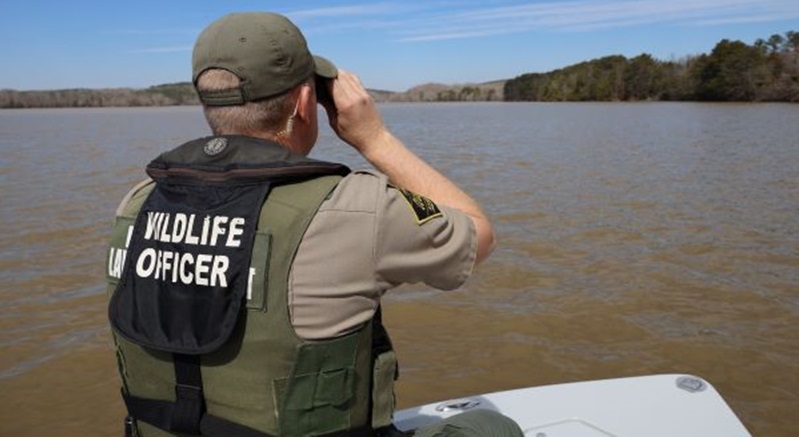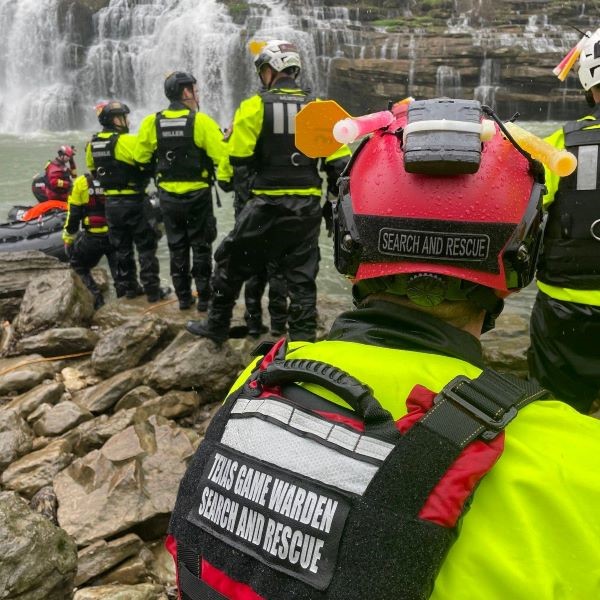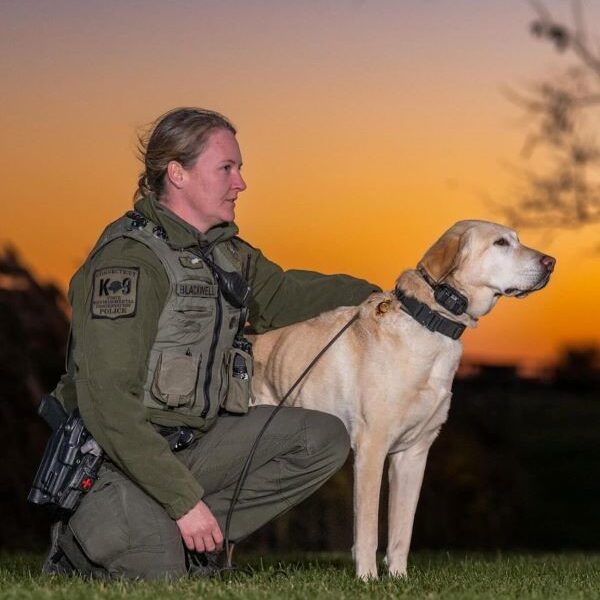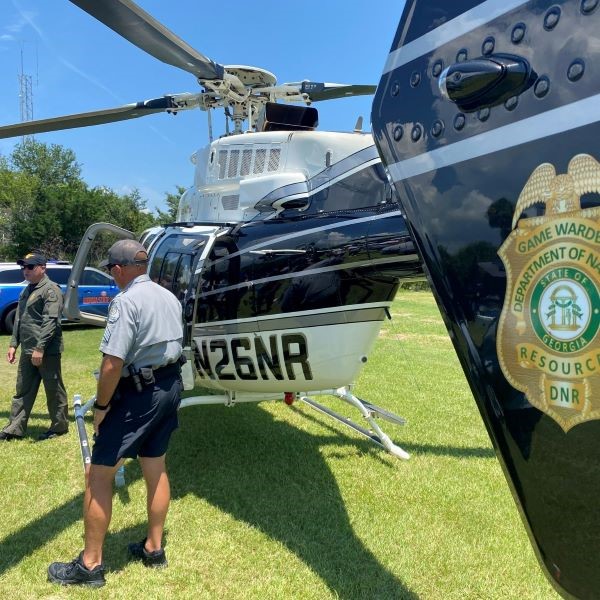
With the frequent mention of the approximate total of law enforcement officers in America —around 850,000 or so— our minds likely automatically default to projections of those cops patrolling mean streets and eyeing beats with populations aggregated in metropolis regions and inherent cacophony of bustle. But some of the nation’s cops are off-pavement and out in the wilds, preserving natural habitats, mostly single-handedly.
A faction of the total police work in off-pavement landscapes, where green lushness and streaming waterways pale in comparison to gray concrete structures and black asphalt labyrinths where automobiles compete for scant spaces, not likely to see any baseless and nasty anti-cop graffiti.
Between these two contrarian terrains of policing, one may have a better outlook on life—mental health-wise.
Although anecdotally, working as a city cop on midnight-shift for most of my police career, I always found myself craving respite after the most horrid calls. Naturally, I would elect to type my reports via my in-car laptop while idled at one of the city’s beautiful parks, all of which had a river running through or by it.

(Photo courtesy Hillsborough River State Park.)
At night, nocturnal-oriented wildlife would come out of burrows and bushes and Banyan trees, glancing at me (interior red light to allow me to keep watch over my surroundings while also granting enough radiance to discern the laptop keys for report-writing), their stillness telegraphing ambivalence, their sounds signaling readiness to defend themselves. If only they knew I was not a threat but a figure sworn to preclude one (or more).
I imagine armed and fully sworn wildlife officers assigned to preserve and safeguard any of God’s green country have no issues with navigating unlevel terrain and mountainous regions whose vastness affords some of the finest scenery and sanctified geography to slay any stress. (Many people attest that nature is their go-to therapy.)
For me, it was surreal to be sitting idle in a fully marked police cruiser, typing criminal report affidavits (CRAs) after depositing one or more arrestees at the county jail, and seeing the glinting of alligator eyes (several sets floating at the river’s surface) created by moonlight. Some might find that eerie. I was elated they weren’t packing firearms or knives or reminding me that they pay my salary.
Indeed, there are various brands of policing, some of which are far from urban centers’ inherent woes that come with too many humans packed into the same space and paying hefty sums to be there.
According to Zippie.com’s report of “state wildlife officer demographics and statistics in the US,” we have roughly 953 state wildlife officers covering America’s vast frontiers.
953 officers equate to a tiny number of LEOs in the depleted context of our nation’s overall sworn strength, certainly considering days off and such that makes it even smaller when posted on duty.
Per a May 2023 US Bureau of Labor Statistics (BLS) tabulation, there are 6,290 fish and game wardens (sworn, by a different name than wildlife officers), each assigned to “prevent fish and game law violations.”
Is there any distinction between wildlife officers and game wardens?

(Photo courtesy of Texas Game Wardens.)
GameWarden.org offers an exposé of federal wildlife officers employed by the U.S. Fish and Wildlife Service:
“Wildlife Officers often have much less ground to cover within their home territory. State game wardens cover vast regions of their home state, but federal officers only have responsibility for their own refuges.” In any event, these unique LEOs are armed and duly trained to enforce laws and possess powers of arrest when confronting violators off the beaten path.
The BLS sum of almost 6,300 cops patrolling the vast terrain, through changing seasons, implies disparity in police presence on large tracts of land—the most ideal aspect in the eyes of wrongdoers and criminal fugitives focused on concealment and non-detection after committing egregious deeds against folks in city areas, making wildlife officers (by any name) challenged with immediate backup realities.
I wonder if that is changing…
Recently, I have been receiving bulletins from various jurisdictions around the country, each agency reporting on assemblages of wildlife cops entering or graduating from respective training academies.

(Photo courtesy of the NC Wildlife Resources Commission.)
Of course, like the majority of cops serving in metro areas, retirements may influence hiring campaigns among state agencies employing sworn cops relegated to natural, off-the-pavement jurisdictions.
According to the BLS data, Florida claims the top spot among the five states that employ the most wildlife law enforcement officers, with New York, Tennessee, California, and Arizona rounding out the list in particular order.
Florida’s contingent of wildlife officers has the highest concentration in Tampa/St. Pete/Clearwater, largely due to the necessity of patrolling waterways, clearly off the pavement.
Naturally, whether called wildlife officers or game wardens, both attend police academies for physical training and academics such as law, deeply delving into environmental, agricultural, horticultural, and maritime statutes.
These are the sworn men and women who investigate BUI (Boating Under the Influence) and DUI, depending on what mode of transportation they are deployed in during a duty shift.
These diehard naturists also visit kids’ classrooms and educate them on the proper respect for wildlife and care of landscapes, explaining to youngsters how and why they go about their duties.
Policing off the pavement engenders certified K9s to help sift through the lush vastness.

(Photo courtesy of the Connecticut Environmental Conservation Police.)
Like most other law enforcement organizations, wildlife cops are also partnered with police K9s, the latter of which extraordinarily sniff through terrain and are excellent trackers, often locating lost hikers in the vast expanse of nature. Synonymous with K9s are wildlife law enforcement aviation units.

(Photo courtesy of the Law Enforcement Division, Georgia Dept. of Natural Resources.)
Given incongruous terrain and an unforgiving landscape upon which to navigate as LEOs, wildlife cops employ police helicopters and drones to provide an aerial view during their operations, particularly in search-and-rescue feats.

(Photo courtesy of Texas Game Wardens.)
It makes perfect sense to deploy a police drone to hover and search largely unnavigable landmasses, saving wildlife officers from unnecessary treks and inherent injuries that easily challenge our species and threaten their lives.
With burgeoning residential and commercial developments sprouting up throughout Florida (which we recently reported on), local legacy media have been airing an increase in wild animal sightings, such as black bears and various mountain cats, in urban areas, strolling around city streets, rummaging trash bins in driveways, and poking around Dumpsters behind restaurants. (Irony of writing about off-pavement policing and wildlife unusually roaming on pavement, with a bear quite close to the Tampa International Airport.)
City cops and county deputies were notified and responded to these instances, deferring to specially trained law enforcement officers employed by the Florida Fish and Wildlife Commission (trained and authorized to use rifles loaded with tranquilizer darts, assisted by wildlife biologists who long-haul and reintroduce the animals back into nature preserves).
Wildlife law enforcement has unique features and specialized duties on massive tracts of land with mostly zero back-up officers readily available to rely on if/when stuff hits the fan.
Nevertheless, this brand of off-pavement policing is essential to preserving nature’s treasures and arresting those who seek to defile it all, whether property damage, animal cruelty, or going off-grid as a fugitive from justice.